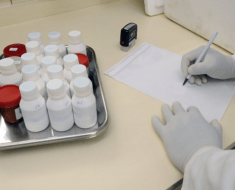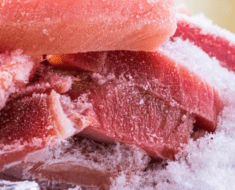
Histamine intolerance is your body’s inability to process allergic attacks like a runny nose, skin irritation, or chest congestion.
Our immune system produces this chemical named histamine. It is developed in response to an allergic or inflammatory reaction. At the same time, it also acts as a transponder to communicate important information to the brain and plays a role in digestion.
What is histamine, exactly?
You might feel odd when you use the word “histamine intolerance,” but that’s not the case. Histamine has several vital functions to do. Histamine originates from our immune system. A specific kind of white cell named must cells release in our immune system. It takes place especially when we get an injury or get an allergy to some environmental factor. It shows up as inflammation in certain parts of our body.
Histamine will act on many different body parts if you come into contact with something you’re allergic to or intolerant to. It includes dilating blood vessels, causing your lungs to compress, releasing adrenaline, speeding your pulse, increasing vascular permeability, which causes swelling, and making your skin itchy. Simply put, it causes an allergic reaction according to doctors.
Histamine also stimulates the production of stomach acid, which aids in digestion. But when histamine goes rogue, people regularly experience histamine reaction symptoms. This condition is called histamine intolerance.
Symptoms of histamine hypersensitivity
Histamine is linked to frequent allergic reactions and symptoms. Many of these symptoms are comparable to those of histamine intolerance.
The following are examples of typical responses to this intolerance, though they can vary:
- Migraines or headaches
- Congestion or sinus problems
- Fatigue \shives
- Digestive issues
- Irregular menstrual cycle
- Nausea
- Vomiting
Histamine intolerance causes
- The primary cause of histamine intolerance is deficient DAO (diamine oxidase) activity. It decreases the body’s rate of histamine elimination.
- Ethanol can also be a cause due to its inhibiting the activity of histamine degradation by DAO enzymes operating normally. Other common inhibitors of DAO include muscle relaxants, antibiotics, and antidepressants, among others.
- Genetic factors also influence histamine intolerance prevalence in particular populations. But these impacts are most likely indirectly related to inherited gastrointestinal disorders.
Effects of the low-histamine diet
Those who experience symptoms such as sneezing, irritation, or hives in response to histamine-containing foods may benefit from the low histamine diet. Acording to the opinion of the best doctors histamine is a chemical naturally found in the body and certain foods.
The low histamine diet can assist an individual in deciding which foods trigger their symptoms. If they avoid these foods, they may experience an improvement. A health expert can guide a person through this process.
How to naturally prevent histamine intolerance
Avoiding foods high in histamine or that cause your body to release histamine is an essential first step. The key to reducing histamine intolerance symptoms is strictly following a low- or no-histamine diet.
Other treatments, such as medications and stress management, may also be beneficial. Let’s examine them in detail:
Foods to include
Follow a low-histamine diet that eliminates foods high in histamine and reduces inflammation.
This could consist of the following:
- Fruit: blueberries, apricots, cranberries, apples, mango, peaches.
- Examples of vegetables include onion, sweet potatoes, asparagus, broccoli, squash, cucumbers, and beets.
- Dairy: Pasteurized milk, butter, and cream cheese. Eggs are safe in moderation. The whites may release histamine. Yolks are safe
- Meats: Freshly-cooked meat and poultry. either fresh or frozen fish
- Potatoes, corn, rice, and oats are grains.
- Fats and oils: animal fats.
- Seasoning: both fresh and dried herbs, salt.
- Drinks: fruit juice, herbal tea, and water (avoiding citrus).
Foods to avoid
A balanced diet includes moderate amounts of histamine. However, histamine-rich foods can cause inflammatory responses and other symptoms.
These foods are high in histamine:
- Alcohol and other brewed beverages
- Fermented foods and milk products, such as sauerkraut and yogurt
- Dried fruits
- Avocados
- Eggplant
- Spinach
- Dried or smoked meat products
- Older shellfish cheese
Medications that control histamine
Aside from dietary modifications, there is no specific treatment for histamine intolerance.
However, one or more of the following methods may be effective:
- Taking antihistamines
- Taking DAO enzyme supplements
- Avoiding medications linked to histamine intolerance, which may necessitate switching medications
- Taking corticosteroids
In the majority of available studies, DAO supplementation produced positive outcomes. However, additional research is required to determine the effectiveness of this supplement in treating histamine intolerance.
Reduce stress
It has been discovered that chronically high stress increases the release of numerous hormones, depletes calming neurotransmitters, and releases inflammatory compounds such as histamine. Consequently, reducing or controlling emotional and physical stress can reduce the body’s histamine levels. This should be a top priority for you.
Is a test available for histamine intolerance?
Typically, medical professionals diagnose histamine intolerance after ruling out other conditions with similar symptoms. They may begin with food allergy and intolerance testing.
For individuals with chronic intestinal symptoms, a gastroenterologist may additionally test for the following:
- Celiac disease
- Lactose intolerance
- Irritable bowel disorder
- Inflammation of the bowel
Those with histamine intolerance are typically instructed to keep a food diary. This can aid in the identification of symptoms and dietary patterns.
A blood test can also determine a person’s DAO and enzyme activity levels.
Conclusion
A low-histamine diet has been shown to improve histamine intolerance’s severe reactions. These may lead to allergy-related symptoms such as sneezing, headaches, and itchy skin.
Managing and controlling it through diet and self-help remedies is an excellent idea. Still, you should consult your general physician before starting any specific food to reduce histamine intolerance.
FAQs
1: Does water effectively remove histamine?
Water is necessary for all body processes, including the regulation of histamine levels, and must be consumed in large quantities daily. Water supports the elimination of histamines from the body, as more than 95% of excess histamines are lost via urine.
2:. How long does it take for the histamine levels to get normal?
According to studies, it takes 14 to 30 days to see a difference in baseline histamine levels when following an elimination diet that eliminates all histamine.
3.Is milk a source of histamine?
Yes, milk contains a substantial amount of histamine. However, fermented dairy products like old cheeses, yogurt, and sour cream contain even more significant amounts of histamine. You can drink coconut milk, rice milk, or almond milk.





